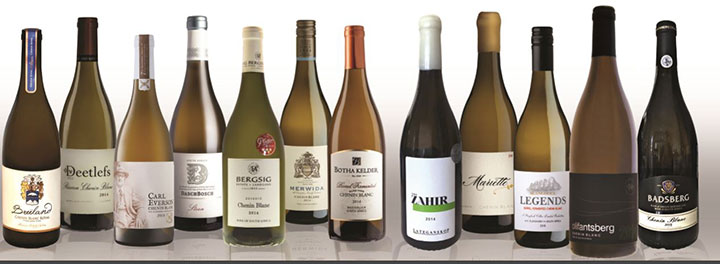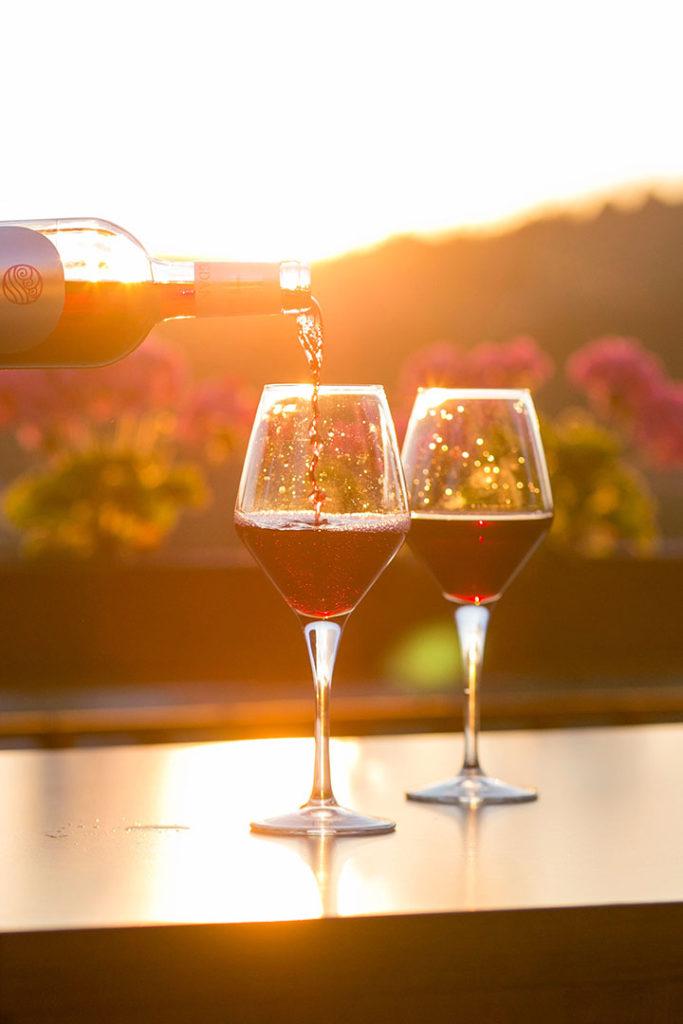The rise and rise in quality of South African wine has seen our country being dubbed as “the world’s most vibrant wine-producing nation”, this according to Platter’s Wine Guide 2017. This is believable if the recent awards for the guide are anything to go by: with a record 94 wines being recognised with five-star status.
Top wine trends to look out for in 2017
“Quality” is the key word for 2017. “We’d really like to see an increase in value packaged wines, which will in turn help to promote brand SA,” says Wines of South Africa (WOSA)’s Communications Manager, Maryna Strachan.
“For us it is important that the rest of the world sees the phenomenal quality and standard of our wine over the mass-produced offering that is seen in the sub-£5 category of wines purchased at most leading supermarkets in the UK and Europe.”
It’s not only the high quality of our wine being noticed, but also the experience we offer in our winelands. According to VinPro (a non-profit company who liaises with government and industry role players on profitability and sustainability issues on behalf of 3 500 SA wine producers, cellars and industry stakeholders), wine tourism is growing by a whopping 7% annually.
As an industry we have an exciting mix of established names together with newer ones, which show what good health the industry is in. There’s never been a better time to be a winelover in South Africa, here’s what we’re drinking in 2017.
Back to nature – the natural wine movement
The natural wine movement has set the globe abuzz and has slowly but very surely crept into South Africa’s winemaking scene too. Generally being made by more boutique producers, this style of wine is one surrounded by controversy. Firstly, no one seems to know what the term really means. Some say it can include organic, biodynamic and minimal intervention wines. Though the purists among us say it’s strictly a term used for minimal intervention winemaking – which is essentially the bare bones, no manipulation in the cellar, no adjusting for acidity, no adding tannins or new oak, and so on. While the naysayers are touting that natural wines are being used as a blanket term to market wines with faults. Whatever your take, there’s no denying there are some truly phenomenal wines being made in this style. Try: Thorne & Daughters Paper Kite 2015 & Reyneke Organic Reserve Red 2013
Send in the clones
Yip, it’s true – wine is set to get even geekier. Leading the charge is Richard Kershaw of the eponymous wine label. Clonal selection in a nutshell: each variety aka chardonnay, chenin and so on have numerous different replicas that impart different flavour characteristics while still retaining the core varietal flavours. Kershaw’s “Deconstructed” zeroes in on the minutiae that can affect winemaking. “My Deconstructed range showcases particular examples of individual specific sites, soils and clones from the Elgin region.” Try: Kershaw Deconstructed Groenland Mountain Bokkeveld Shale CY548 Chardonnay 2015
Hitting the books
Business is booming within wine-industry-related jobs and the demand for people to know their stuff is increasing. Institutions like Cape Wine Academy and the Wine & Spirit Education Trust (WSET) are seeing an increase in registrations for wine courses. “People really buying into idea of knowing, and are far less intimidated by wine, “ says Cathy Marston, our local WSET programme provider.
Ding-dong the flute is dead
The flute is gradually being shunned in favour of stemware, which is said to better showcase the aroma and flavour of bubbly. The glass for the job? The Lehmann – Jamesse Grand Champagne.
Sémillon’s time to shine
2016 was undoubtedly the year of chenin and its popularity is set to continue unabated. “I think that people will continue go back to the history of South Africa and, after rediscovering chenin and cinsault, they will realise that sémillon has been a diamond in the dust,” says winemaker and sommelier of note Jean Vincent Ridon. He adds: “Soon we will also start seeing more and more sommeliers offer tasting platters with four wines in small doses, so patrons can enjoy uncovering their own food pairing, like it’s done for craft beers.” Try: Steenberg Sémillon 2015
The rise of fine SA Wine
“We’ve seen a boom in the SA vintage wine market over the last 5 years,” says Roland Peens, director of winecellar.co.za. “Blue-chip wines are realising 20%+ year-on-year returns and, while fine SA wine continues to be under-priced in the international market, the trend is set to continue. Currently, one needs to approach a merchant in order to sell your vintage wines, making the market very illiquid, thin and scattered. Wine Cellar is building a fine wine trading platform (launching 2017) that will solve these obstacles.” Try: Kanonkop Paul Sauer 2012
Fridge reds
“Among wine geeks, expect ‘fridge reds’,” says editor of winemag.co.za, Christian Eedes. “Reds you can serve chilled will carry on gaining market share – cinsault, grenache and even carignan are the varieties to look out for.”
Try: Momento Grenache 2015
Label it
The generational gap is closing – and with it comes more exciting wine labels. The 20-somethings and 30-somethings are said to be more likely to grab a bottle of wine with an interesting label. “Wine labels are generally way too safe,” says Christian Eedes who runs an annual wine label competition on his website (The Wine Label Design Awards). “SA is making great wine and some great graphic design too – why are the two communities not collaborating more often?” Try: Saurwein Nom Pinot Noir 2015
Find your niche
“I think the niche varieties haven’t been explored much,” says sommelier of The Test Kitchen, Tinashe Nyamudoka. “As winemakers increase production, they will gain popularity due to their availability. Wines like dry muscats, verdelho, albariño and cinsault. Plus, I see everyone focusing more on big bottles [aka magnums] in top restaurants too. Try KWV The Mentors Verdelho 2013
Low alcohol
“People are after lighter, Rhône-style reds – both blends and single cultivar expressions that are lower in alcohol,” says sommelier Ewan Mackenzie aka The Wine Thief. “There are some awesome new rosés on the market – dry, crisp and fresh – replacing sauvignon blanc as the summer option, while chenin will replace sauvignon as the go-to white alternative in general. Sommelier Miguel Chan of the Tsogo Sun Groups adds: “You’ll see a dialing down of alcohol, as well as adventures in wine infusions, innovations in carbonation; and a growth in prosecco alternatives, seasonal beers and vermouths have all been seen in various crystal balls!
Try Fleur du Cap Natural Light Rosé 2015
New regions
Smaller regions and previously under-explored wards will be celebrated.
“The Breedekloof Wine Valley, is widely regarded as South Africa’s ‘most generous wine route’ as you always get more value than you expect,” says Jeanri-Tine van Zyl (Feed That Bird – Wine Communication Consultants). “The Breedekloof Wine Valley has been synonymous with chenin blanc for decades and some farms are home to chenin blanc vines planted as far back as 1962. This, together with South African consumers’ growing love for chenin blanc, resulted in the formation of the Breedekloof Makers, a band of like-minded winemakers, who are making exceptionally beautiful chenin blanc, only in boutique quantities.”

Win a mixed case (12 bottles) of this rare chenin blanc from the Breedekloof Makers, valued at over R1 000. Click here to enter.
Written by Malu Lambert, wine writer for Food & Home Entertaining.


